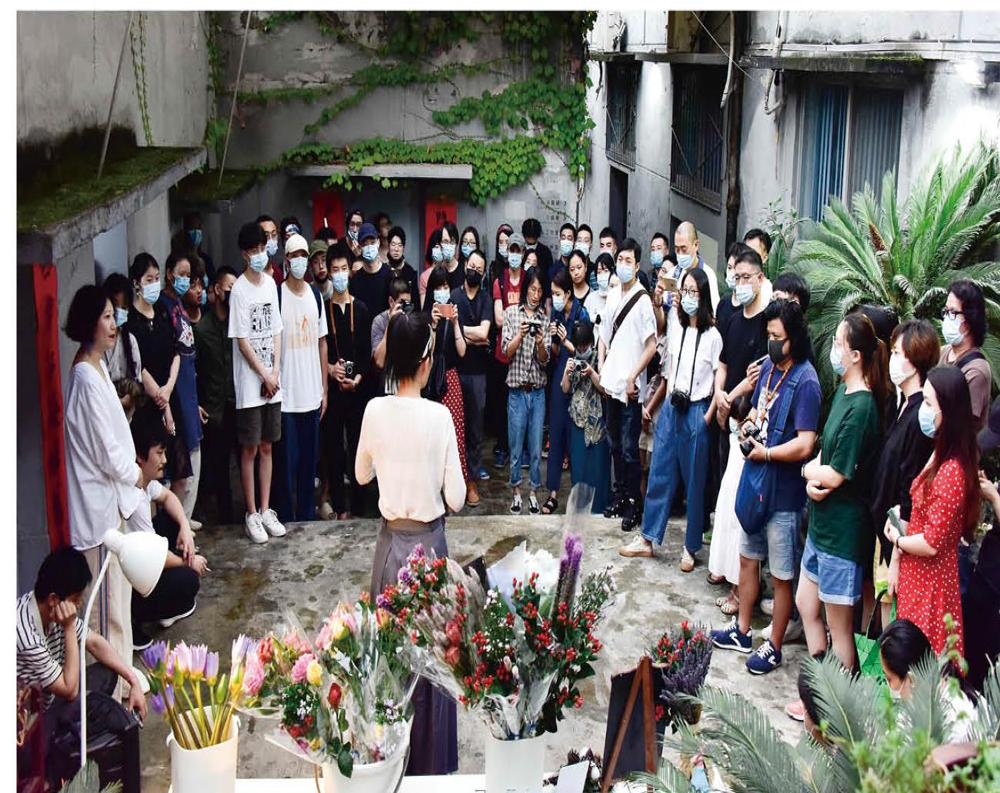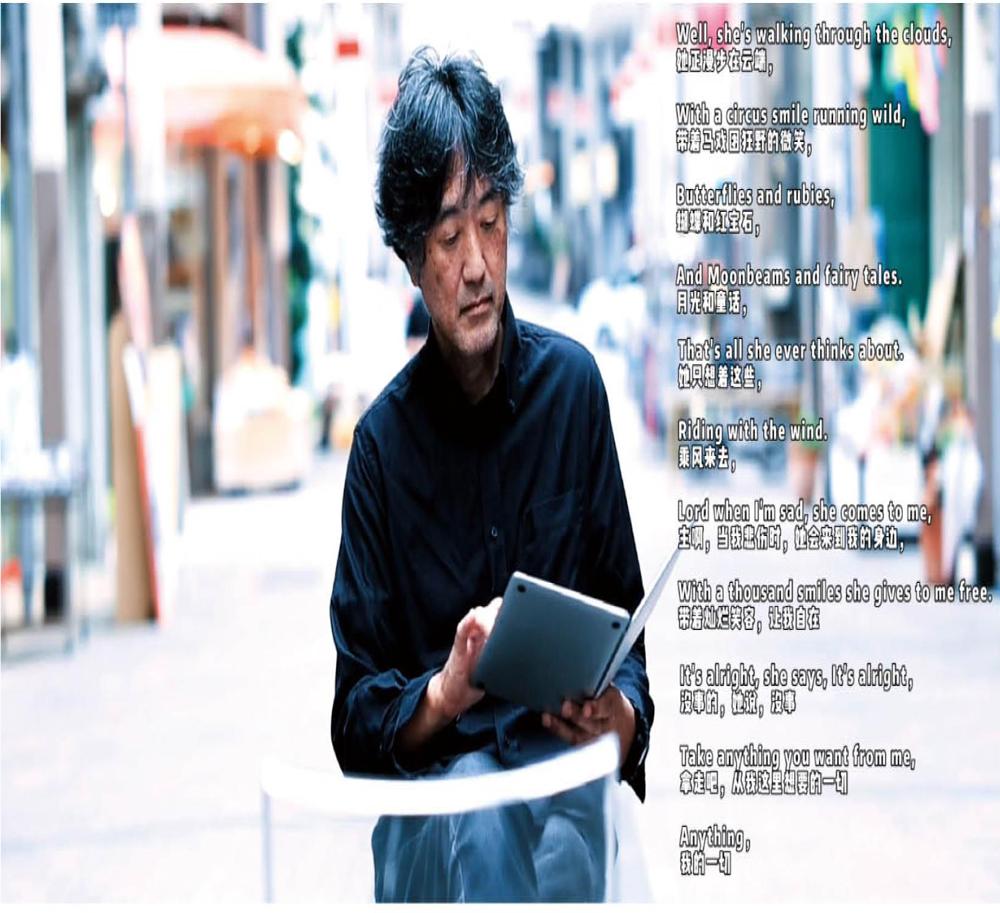《这里,那里,和任何地方》艺术展艺术是不需要翻译的语言,是最好的交流
2020-08-31杨燕
杨燕



7月11日,一场以《这里,那里,和任何地方》为主题的艺术展,在重庆黄桷坪官家林190号开幕,这是九龙坡艺术片区今年首場国外艺术家个人作品展。
受新冠肺炎疫情影响,此次展览的主角日本艺术家小野田贤三先生无法来到开幕现场,但这丝毫没有影响现场的人气,重庆的艺术家、学生及附近居民都加入进来,观看人数超出预期,达到近百人。
疫情下 艺术不会缺席
展览开幕当晚,远在日本的小野田贤三通过网络观看了现场情况,他感到激动、惊喜和遗憾,激动源于展览呈现出来了,惊喜源于竟然来了这么多观众,遗憾没能亲自到现场和观众交流。
“全球艺术机构的海外合作目前都处于搁置状态,原本丰富的展出计划也不同程度地受到影响。”重庆十方艺术中心总监曾途表示,受疫情影响,各国原计划开展的艺博会、重要展览相继受阻,多国博物馆仍处在关闭期,跨境艺术合作更是遇到难题。
曾途称,此次疫情给艺术行业带来的影响还会持续一段时间,但艺术是国际化的语言,是最容易沟通的语言,也是不需要翻译的语言,“艺术就是加深理解、消除误会的桥梁。面对疫情,更期待国际间的艺术交流合作早日重启。”
策展人胡燕子表示,重庆这座城市本身具有比较鲜明的特点,景观魔幻、城乡交融,犹如社会场景的缩影,是艺术家们开展在地实践的绝佳场域,“当疫情阻隔了交流,也许我们应该投入更多的时间,对日常生活现场进行深耕。”
用艺术关照现实和心灵
疫情之下,全球很多艺术家都尝试用艺术形式来表达自己的关注。小野田贤三也没有停下创作的脚步。
1961年出生的小野田贤三,是日本现代化进程的亲历者和见证者。小野田贤三作为一名物理工程师,从网络工作延展到艺术创作进而成为职业艺术家已有30年,他一直尝试将技术与艺术相结合,持续探索当代艺术,其作品曾活跃于德国杜塞尔多夫·北莱茵威斯特法伦州立美术馆、日本越后妻有大地艺术祭三年展等各大展馆和展览。
在小野田贤三《蝴蝶、斑马、月光和童话故事》作品中,代表稳定的椅子与其脚底部的五彩玻璃球构成微妙的平衡关系,玻璃珠的出现改变了原有物体的平衡,使展厅的力学磁场处在一种微妙的互相制约之间。观展时,作品体现的平衡关系屡次被“破坏”,又被外力介入还原,正如新冠疫情下的全球,冲击之后必将达到新的平衡。
小野田贤三的这组作品,让可见的现实和横亘在深处无法窥视的现实都鲜活地浮现出来,触及人心,让观众产生更多联想,引起共鸣。
艺术家无法到场,展览如何得以实现?
胡燕子介绍,“6月初,国内的很多艺术机构逐渐恢复对外开放。我和小野田贤三沟通调整了展览方案,既然本次展览是回应全球现实,那么就应该尊重展览所处社会环境的客观现实。虽然国外很多地方的疫情还在发生,但是中国国内的疫情已得到较好控制,公众需要有品质的文化艺术活动来丰富文化生活。尽管艺术家无法来到展览现场,但他的作品抵达了展览现场,借由艺术实现了思想上的行动。”胡燕子说,当然,艺术家的不在场和观众的在场,都构成了关于时间与空间上“关系”的再创作,“这正是展览最有意思的地方。”
On July 11, an art exhibition themed “Here, There, and Anywhere” opened at No.190 Guanjialin, Huangjueping, Chongqing. This is the first individual exhibition of foreign artists in the Jiulongpo art area this year.
Affected by the COVID-19 epidemic, the protagonist of this exhibition, Japanese artist Kenzo Onoda, was unable to come in person, but this did not dampen the enthusiasm of visitors at all as artists, students, and residents in the neighborhood of Chongqing flocked in, registering nearly 100 in number and exceeding the expectation.
Art is not absent during pandemic
On the opening night of the exhibition, Kenzo Onoda watched the Internet streaming in Japan. Thrilled by the exhibition and surprised by the large crowd, he regretted that he couldnt come in person and talk to the audience.
"The overseas cooperation of global art institutions is currently on hold, and the originally rich exhibition plans have also been frustrated to varying degrees." Zeng Tu, Art Director of Dimensions Art Center said that affected by the epidemic, art fairs and major exhibitions originally planned in various countries are tabled. Museums of many countries are still closed, and cross-border art cooperation encounters headwinds.
Zeng Tu added that the impact of the epidemic on the art industry will continue for a while, but as an international language and the easiest language to communicate, art is also a language requiring zero translation. “Art is a bridge to deepen understanding and eliminate misunderstandings”. International art exchanges and cooperation, therefore, expects a restart.
Curator Hu Yanzi said that the city of Chongqing itself has quite distinctive characteristics. Epitomizing the entire Chinese society with surrealistic landscape and integrated urban and rural areas, it is an excellent field for artists to carry out in-situ practice. "When the epidemic blocks communication, perhaps it is time for us to devote more time to our daily life scene."
Caring for reality and soul with arts
Amid the epidemic, many artists around the world attempt to express their concerns in art forms. Kenzo Onoda has not stopped his creation.
Kenzo Onoda, born in 1961, is a witness of Japan's modernization process. As a physics engineer, Onoda extended his network work to artistic creation and then became a professional artist for the past three decades. He has been trying to combine technology with art and continues to explore contemporary art. His works were collected by galleries and exhibitions such as Kunstsammlung Nordrhein-Westfalen and Echigo Tsumari Art Festival Triennale, etc.
In the works of Butterfly, Zebra, Moonlight and Fairy Tale, the "chair" representing "stability" and the multicolored "glass marble" at its bottom form a delicate equilibrium in the exhibition hall. The appearance of glass marble changes the equilibrium of the original objects, so that the mechanical magnetic field of the exhibition hall is in a subtle mutual restriction. When attending the exhibition, the balance is repeatedly destroyed and restored by the intervention of external forces just like the world under the impact of COVID-19 epidemic. A new equilibrium will be struck after the impact.
Kenzo Onoda's series of works bring realities, visible or abysmal, to the surface, reaches out to the bottom of peoples hearts and evokes more resonance from the audience.
How can the exhibition be realized if the artist is absent?
Hu Yanzi introduced, "In early June, many art institutions in China gradually re-opened to the outside world. Kenzo Onoda and I communicated and adjusted the exhibition plan. Since this exhibition is a response to global reality, we should respect the objective reality of the social environment in which the exhibition is located. Although the epidemic is still rampant in many places abroad, its well controlled in China, and the public needs quality cultural and artistic activities to enrich their cultural life. "Hu explained that although the artist could not come to the exhibition in person, he arrived at the site via his works, and attained spiritual "freedom" through "art". Of course, the absence of the artist and the presence of the audience constitute a re-creation of the "relationship" between time and space. This is the most intriguing part of the exhibition.
